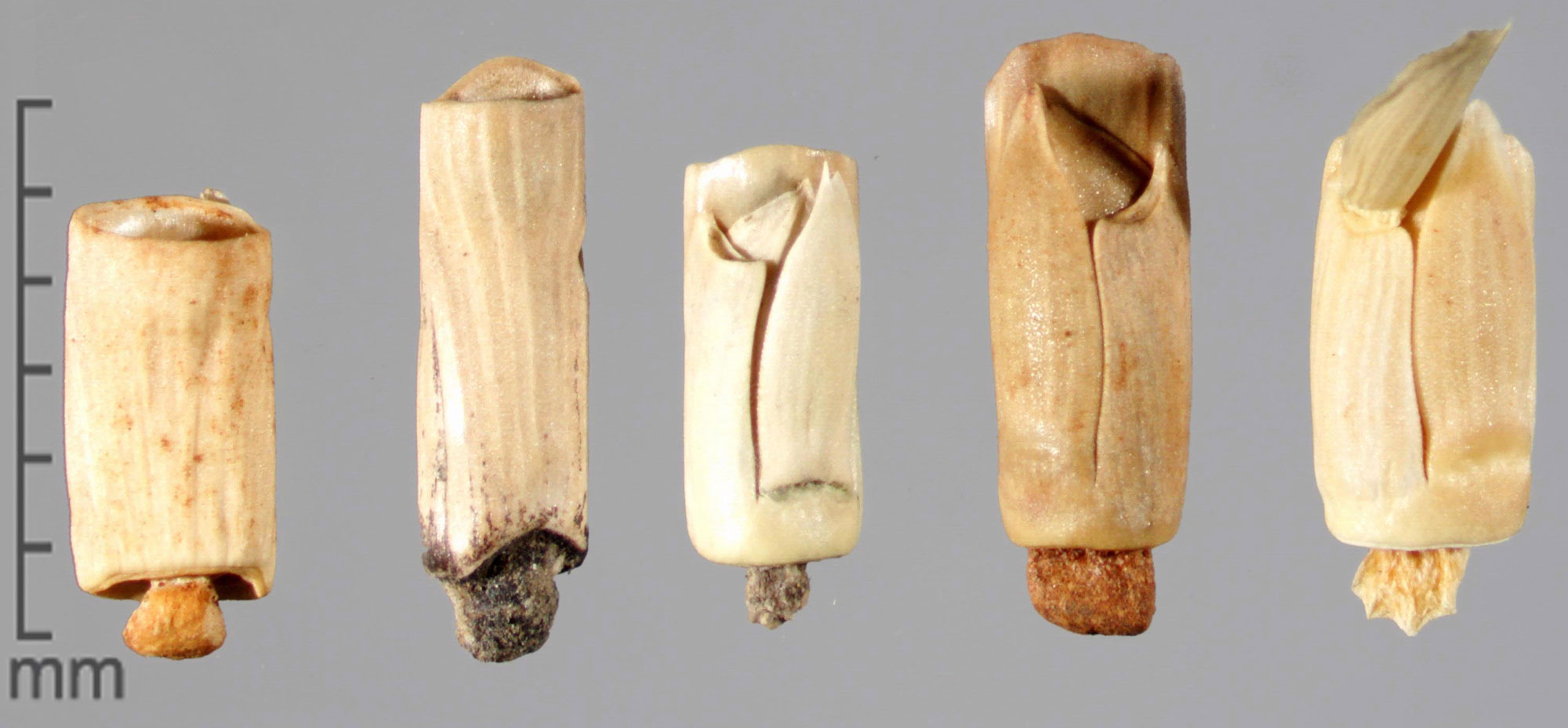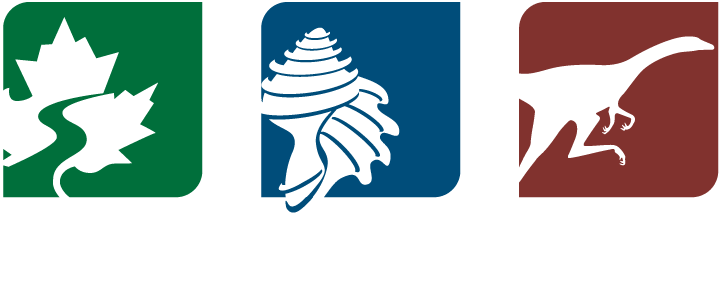Page snapshot: Quick facts about itchgrass (Rottboellia cochinchinensis), a major agricultural weed.
Topics covered on this page: What is itchgrass?; How is itchgrass identified? Where did itchgrass come from?; How does itchgrass spread?; What are the impacts of itchgrass?; How can itchgrass be controlled?; Resources.
Credits: Funded by the National Science Foundation. Any opinions, findings, and conclusions or recommendations expressed in this material are those of the author(s) and do not necessarily reflect the views of the National Science Foundation. Page by Naomi Schulberg (2023)
Updates: Page last updated August 14, 2023.
Image above: Itchgrass (Rottboellia cochinchinensis) inflorescences, Nakhon Nayok Province, Thailand, in the native range of itchgrass, 2009. Photo by Tony Rodd (flickr, Creative Commons Attribution-NonCommercial-ShareAlike 2.0 Generic license).
What is itchgrass?
Itchgrass or raoulgrass (Rottboellia cochinchinensis) is an annual C4 grass that is considered to be one of the worst weeds in the world. It is especially harmful in agricultural settings.
Itchgrass germinates in the summer and it is most commonly found in tropical or subtropical climates; while best suited to sunny conditions, is relatively tolerant of shade and a wide variety of environmental conditions. It is also often found in sites prone to disturbance, as it easily outperforms native grasses when establishing after a disturbance.

Itchgrass growing in Lake Charles, Louisiana, U.S.A. Photo by Irvin Louque (iNaturalist photo 21270229, Creative Commons Attribution 4.0 International license, image cropped and resized).
How is itchgrass identified?
Itchgrass can grow to be up to 10 feet (about 3 meters) tall and forms clumps. Its leaves have broad white midribs and are rough to the touch. The leaf sheath has small hairs that can penetrate skin, giving itchgrass its name. Its flowers are arranged in a racemose inflorescence that is around 4 inches (10 centimeters) long.

Itchgrass plant, inflorescence, seedling, and seed. Photo by the International Rice Research Institute on flickr (Creative Commons Attribution-NonCommercial-ShareAlike 2.0 Generic license).
Where did itchgrass come from?
Itchgrass is native to tropical Africa and Asia to northern Australia. Today, it is present in the U.S., the Caribbean, and Central and South America.
Itchgrass may have been brought to from the Philippines to southern Florida in the early 1900s as a forage grass. It is currently listed as a noxious weed in 12 states in the Southeast and the Midwest, but the full extent of its spread is unclear.

Itchgrass growing along a roadside in northern Madagascar, 2015. Madagascar is considered to be in the native range of itchgrass. Photo by Bat (flickr, public domain).

Map of the distribution of itchgrass in the United States and Canada. States with reports of itchgrass are shown in green. Map from EDDMapS. 2023. Early Detection & Distribution Mapping System. The University of Georgia - Center for Invasive Species and Ecosystem Health. Available online at http://www.eddmaps.org/; last accessed August 3, 2023.
How does itchgrass spread?
Itchgrass seed spreads by seed. The grass is adapted for ant dispersal, and the dispersal units (seed-containing structures) have elaisomes on them. Elaisomes are attractive to ants because they contain proteins and fats. In addition to ants, mature itchgrass seeds can be spread by other animals (livestock, birds), water, and farm equipment. Itchgrass seed can also spread as a contaminant in seeds of agricultural crops.
Itchgrass produces seeds prolifically; one itchgrass plant may produce more than 16,000 seeds. Plants can start producing seeds in as few as six weeks after they appear above the soil surface.

Itchgrass, Nakhon Nayok Province, Thailand, where it is native, 2009. Photo by Tony Rodd (flickr, Creative Commons Attribution-NonCommercial-ShareAlike 2.0 Generic license).

Dispersal units (seed-containing structures) of itchgrass. Each dispersal unit has an elaiosome projecting from it (the structures at the bottom of each dispersal unti). Photo by Julia Scher (Bugwood.org photo 5376737, Creative Commons Attribution-NonCommercial-3.0 United States license, image cropped and resized).
What are the impacts of itchgrass?
Itchgrass is a major weed in agricultural environments. It is considered a weed for 18 crops, including the grass crops corn (Zea mays), rice (Oryza sativa), sorghum (Sorghum bicolor), and sugarcane (Saccharum), as well as the major legume crop soybean (Glycine max). It grows in dense clumps, and its presence in agricultural settings often significantly reduces crop yields. Managing itchgrass is often costly.
The hairs on itchgrass are unpalatable and cause severe irritation to most grazers, so animals do not eat itchgrass. The hairs can also irritate the skin of agricultural workers.

Itchgrass growing amidst crops. Photo by USDA APHIS PPQ - Oxford, North Carolina (Bugwood.org photo 1149131, Creative Commons Attribution 3.0 United States license).

Irritating hairs on the leaf sheath of itchgrass. Photo by Kimbrint (iNaturalist photo 225529476, Creative Commons Attribution-NonCommercial 4.0 International license, image cropped).
How can itchgrass be controlled?
Both mechanical and chemical methods are used to control itchgrass; currently, no biological control methods have been developed for itchgrass management, although several have been studied. No single control tactic is effective by itself, but several control methods used together can be effective.
Most commonly, tilling followed by herbicide application is used as a control. Tilling prior to planting agricultural crops encourages the germination of itchgrass. Once the seedlings emerge, they can be sprayed with herbicide. A variety of herbicides can be used, both before and after itchgrass germinates and emerges. Small clumps of itchgrass can also be removed by hand, although this method is not effective at larger scales.
Certain agricultural practices also control itchgrass, such as implementing a crop rotation or planting cover crops. Crop rotation helps control itchgrass because the weed has closer associations with some crops (such as maize) than others. Planting nitrogen-fixing legumes as cover crop is also a way of controlling itchgrass and restoring nutrients to the soil.

A man holding itchgrass with a gloved hand. Photo by USDA APHIS PPQ - Oxford, North Carolina, USDA APHIS PPQ, Bugwood.org photo 1149131, Creative Commons Attribution 3.0 United States license).



